M A F O N S O
di_segni - works 2013
MAFONSO. di_segni - works 2013
A cura di / curated by Piernicola Maria Di Iorio
dal / from 07.11.2013 al / to 07.03.2014
dirartecontemporanea | 2.0 gallery
www.dirartecontemporanea.eu
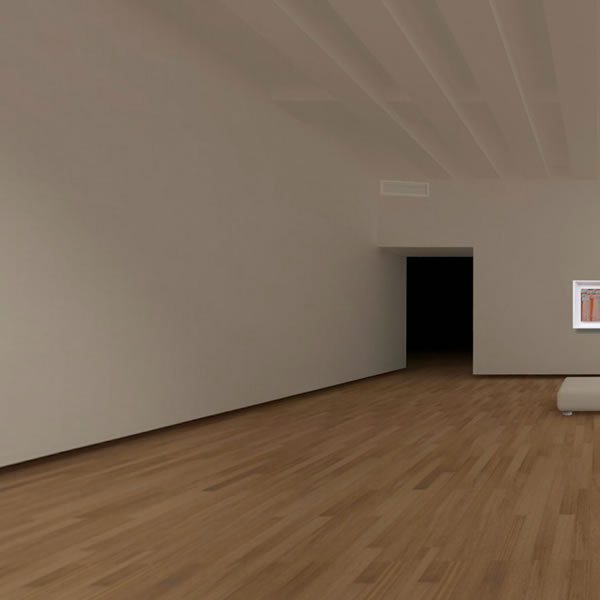

MAFONSO
DI_SEGNI le tracce concrete nel virtuale
di Piernicola Maria Di Iorio
Pensare a una galleria virtuale come qualcosa di effimero e fittizio è un pensiero lecito, credere di trovare concretezza in uno spazio simulato potrebbe risultare astruso, se non paradossale; un non luogo se vogliamo, dove il tangibile rischia seriamente di liquefarsi nel vortice frenetico e ansioso del web. Ma se in questo luogo riusciamo a comprendere concretamente il risultato di un gesto, l'estrema sintesi di un percorso, progettato e definito, capace di rappresentare se stesso e al contempo capace di costruire un vero e proprio dizionario visivo, la concretezza e il tangibile risultano reali, veri.
La prova ineluttabile è nelle opere di Mafonso, risultato di un gesto e traccia visibile del suo e nostro passaggio. Legati necessariamente da una pregnante spiritualità e un'estetica classica, presentata chiaramente nei riferimenti a Minerva, i di_segni di Mafonso creano uno spazio leggibile, un prolungamento mentale di quello che si vede offrendo, così, la possibilità a chi interpreta di comprendere il contenuto delle opere.
Il classicismo mai perduto e i canoni estetici esplicitamente devoti al rinascimento creano nuova luce, una dicotomia tra tempo ancestrale insito nell'uomo e l'epoca del contemporaneo. Nei dittici presentati ` evidente la dualità espressa dalla mente e dalla memoria presente nelle opere di sinistra e dai volti rinascimentali sulla destra - questi ultimi realizzati rapidamente, sintomo di perfezione nell'indagine della natura umana e dell'arte che la imita meravigliosamente. Il discorso, invece, risulta diverso nell'installazione presente nella seconda stanza in cui due dittici dialogano con Cosa Mentale, pensiero di Mafonso dedicato a Leonardo Da Vinci; è il prodotto di un incontro e una traccia inequivocabile, dichiarazione di uno stato d'animo, di una visione della propria interiorità, ma anche contingenza dell'incontro con il mondo circostante.
Partendo dal tratto, rinascimentale nell'animo e simultaneamente contemporaneo, Mafonso acquisisce la consapevolezza del valore espressivo del segno; individuando e isolando la propria traccia costruisce un alfabeto di immagini da comporre e scomporre innumerevoli volte.
Se la componente classica mette in evidenza la purezza dei volti presenti nei dittici, d'altra parte ci sono tutti gli elementi che testimoniano la fluidità e la rapidità dell'era contemporanea. I di_segni presenti hanno una collocazione decisamente attuale, rappresentano il presente in modo inequivocabile. Mafonso, infatti, prende in considerazione i mutamenti e le trasformazioni della realtà in cui vive, elementi tutt'altro che immobili e statuari, rappresentanti di valori culturali e identità sociali in continua evoluzione e, se vogliamo, proprio per questo ipotetici e simulati appunto virtuali, come la galleria che lo ospita.
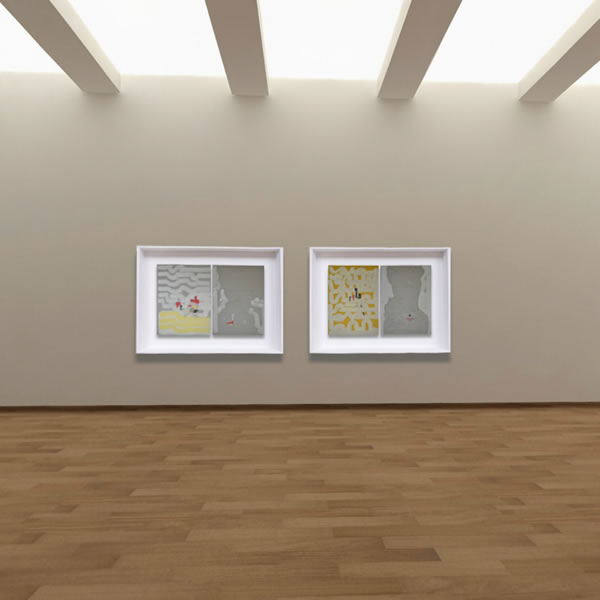
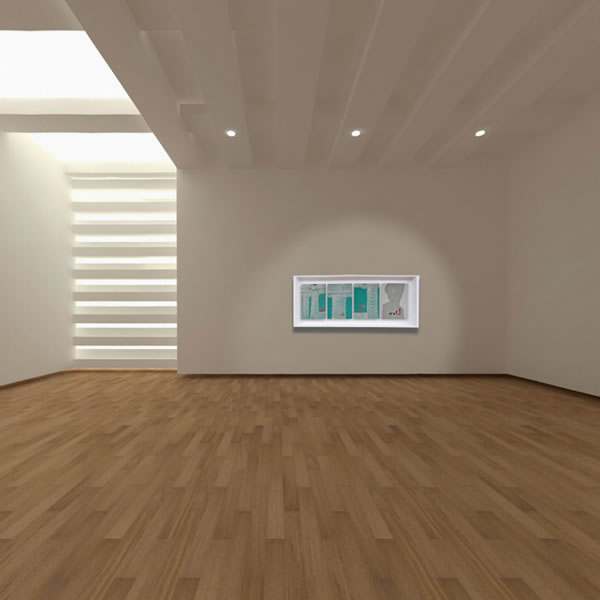
MAFONSO
DI_SEGNI the concrete tracks in the virtual world
by Piernicola Maria Di Iorio
Thinking about a virtual gallery as something ephemeral and fictitious is a legitimate thought, thinking about finding concreteness in a pseudo space could result abstruse, even paradoxical; a non-place , where the tangible seriously risks to liquefy in the chaotic and agitated vortex of the web. But if in this place we succeed to understand concretely the result of a gesture, the extreme summary of a path, planned and defined, able to build a outright visual dictionary, the concreteness and the tangible result real, true.
The inescapable evidence is in the Mafonso's works, result of a gesture and track visible of his and our transit. Necessarily bonded to a pregnant spirituality and a classic aesthetics, clearly presented in the Minerva's references, the Mafonso's di_segni create a readable space, a mental extension of what you see providing the possibility to who's interpreting to understand the content of the works.
The never lost classicism and the aesthetic rules explicitly devoted to the renaissance create a new light, a dichotomy between ancestral time inside the man and the contemporary time. In the presented diptych is evident the duality expresses from the mind and the memory present in the works on the left and from the faces of the renaissance on the right - the latter realized quickly, symptom of perfection in the investigation about the human nature and about the art that imitates her marvelously. The speech, on the other hand, turns out to be different in the installation present in the second room where two diptychs discuss with Cosa Mentale, Mafonso's thought dedicated to Leonardo Da Vinci; it is the product of a meeting and an unmistakable track, declaration of a mood, of a vision of our own inner being, but also contingency of the meeting with the surrounding world.
Originating from the trait, renaissance in the heart and simultaneously contemporary, Mafonso acquires the awareness of the expressive value of the sign; locating and isolating our own track forms an alphabet of images to compose and decompose innumerable times.
If the classic element highlight the purity of the faces in the diptychs, on the other hand there are all the elements that testify the fluidity and the quickness of the contemporary time. The di_segni have a certainly current collocation, they represent the present in a unmistakable way. Mafonso, effectively, considers the variations and the transformations of the reality in which he lives, elements that are not motionless and statuesque, representative of cultural values and social identities in continuous evolution and, or perhaps, exactly for that they are hypothetical and simulated ,virtual indeed, like the gallery that hosts him.
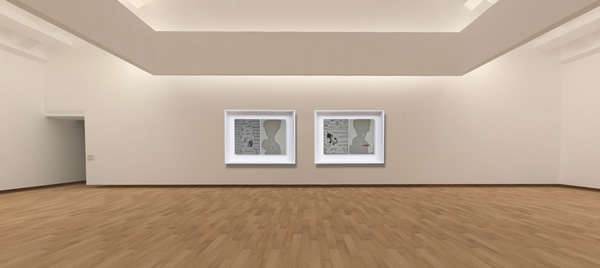
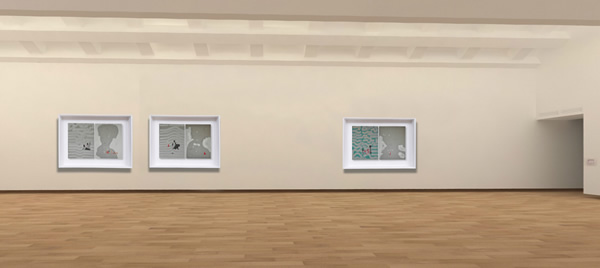
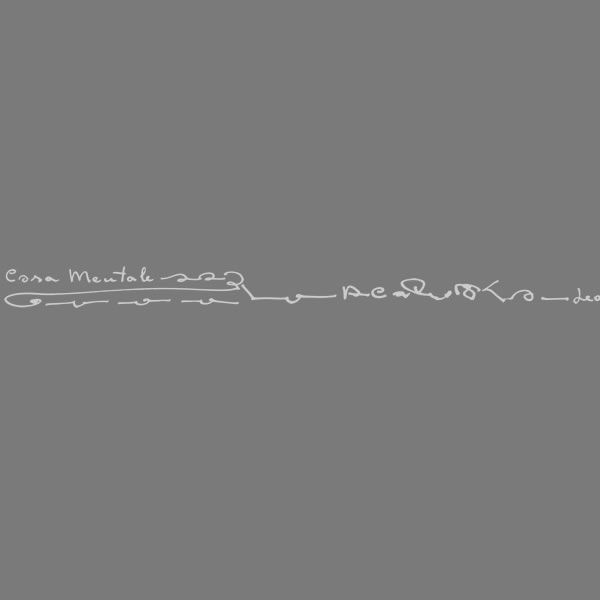
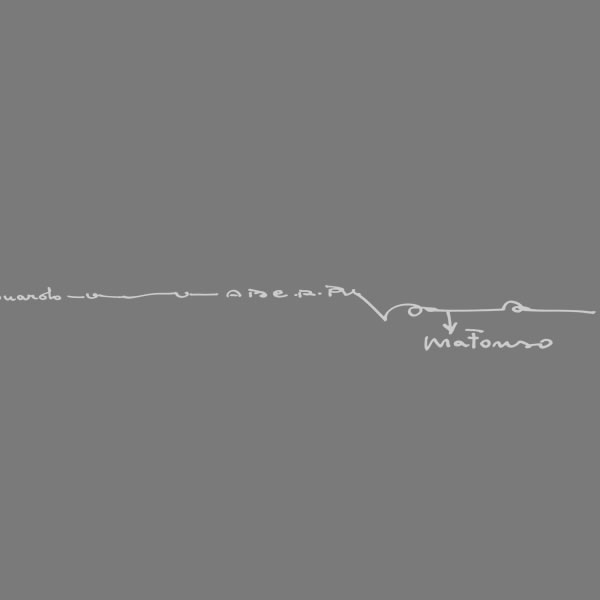
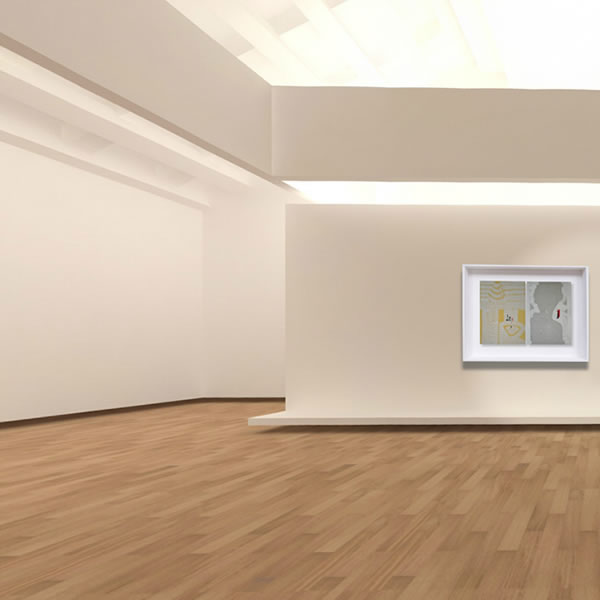
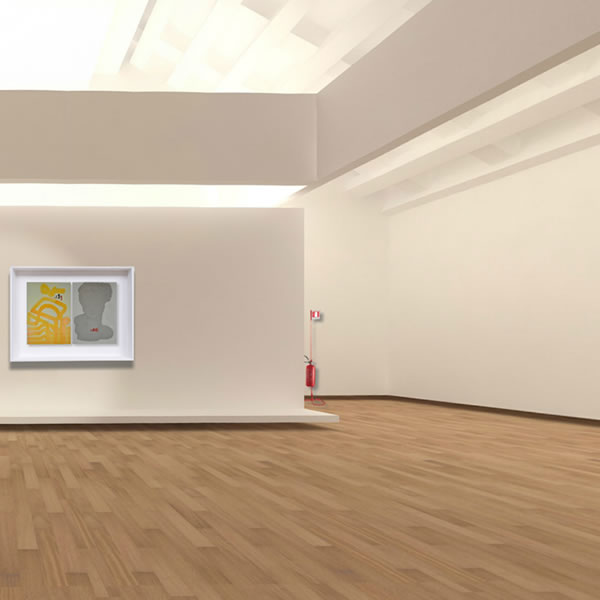

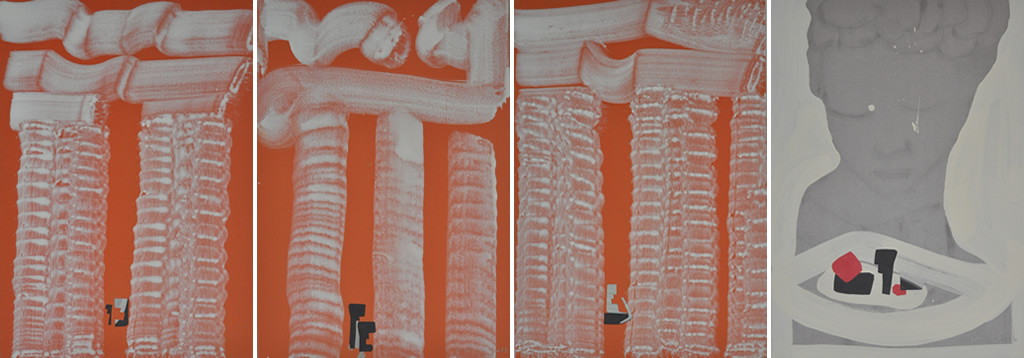
Mafonso. 2013. di_segni #-XV (n° 4 works. cm 50x35). Mixed media+collage on cardboard
Mafonso. 2013. di_segni #-XIV (n°2 . cm 100x70). Mixed media+collage on cardboard
Mafonso. 2013. di_segni #-XIII (n°2 works. cm 100x70). Mixed media+collage on cardboard
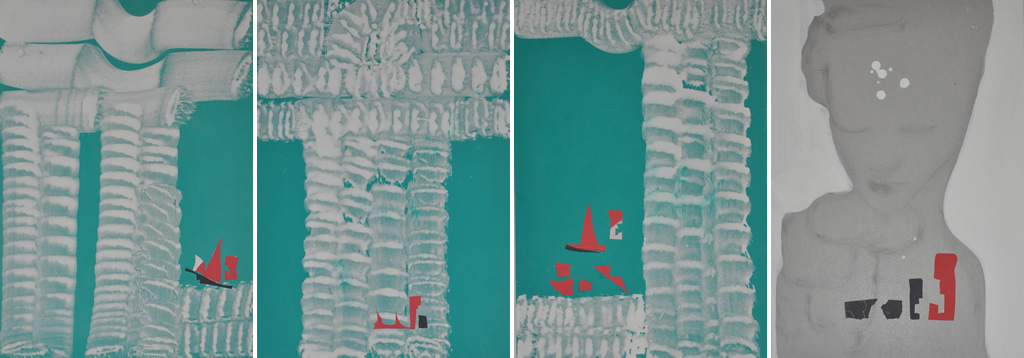
Mafonso. 2013. di_segni #-XI (n° 4 works. cm 50x35). Mixed media+collage on cardboard

Mafonso. 2013. di_segni #-XII (n°3 works. cm 100x70 + 50x35 + 100x70). Mixed media+collage on cardboard
Mafonso. 2013. di_segni #-I (n°2 works. cm 100x70). Mixed media+collage on cardboard
Mafonso. 2013. di_segni #-II (n°2 works. cm 100x70). Mixed media+collage on cardboard
Mafonso. 2013. di_segni #-III (n°2 works. cm 100x70). Mixed media+collage on cardboard
Mafonso. 2013. di_segni #-IV (n°2 works. cm 100x70). Mixed media+collage on cardboard
Mafonso. 2013. di_segni #-VI (n°3 works. cm 50x35 + 100x70 + 50x35). Mixed media+collage on cardboard
Mafonso. 2013. di_segni #-VII (n°2 works. cm 100x70). Mixed media +collage on cardboard
Mafonso. 2013. di_segni #-VIII (n°2 works. cm 100x70). Mixed media+collage on cardboard
Mafonso. 2013. di_segni #-IX (n°2 works. cm 100x70). Mixed media+collage on cardboard
MAFONSO
B i o g r a f i a / B i o g r a p h y
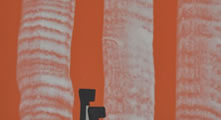
Nato a Frattaminore (Na) nel 1948, vive e lavora a Caserta.
Autodidatta inizia il proprio percorso artistico nei primi anni '70 vivendo tra la Svizzera (Altdorf) e l'Italia (Roma - Milano).
Sono gli anni ('72-'74) in cui realizza una serie di lavori dove fondamentale è il recupero del manufatto artistico attraverso l'utilizzo del pennello e colori mediante una pittura di taglio istintivista-lirico-primitivista (ciclo di opere dal titolo Alla maniera degli altri).
Si riferisce a Leonardo quando afferma che la Pittura è COSA MENTALE e guarda a Picasso, De Chirico, Campigli e Mondrian (prima maniera).
Fine anni '70 a Roma è tra i fondatori del gruppo COSA MENTALE presentato alla galleria romana Architettura Arte Moderna di via Del Vantaggio da Maurizio Fagiolo Dell'Arco.
Nel '79 si trasferisce definitivamente nell'Urbe dove frequenta gli artisti della cosiddetta Pop-ltaliana (Festa-Angeli-Schifano) presso la Galleria Studio Soligo, con i quali stabilisce oltre che un rapporto di amicizia (in particolare con Tano Festa) anche uno stimolante confronto intellettuale.
Sono gli anni dei cicli: La Dea Racconto, Le Grandi Strade Piene, I racconti Solari, Le Prime Nevi del dopo 2000.
Seguono i cicli: Simbad, Krakatoa e Le Lune di Arqa, Make-Make, Isole di Tempo e Tribú in Esodo, Nevicate Acide, Vanno Tutti verso il nulla, Contano solo i Cieli, Deserti e Dimore. Ha esposto, con personali, nelle maggiori cittá e capitali europee: Roma, Milano, Parigi, Basi�lea, Londra, Napoli, Barcellona, Madrid.
54' Esposizione Internazionale d'Arte, La Biennale di Venezia-Padiglione Italia, Campania.

Coerente con l'idea mentale del "fare" pittura ha sempre pro�ceduto attraverso cicli di progetti estetici in cui l'opera resta, co�munque e soprattutto, cifra aurea del mondo attraverso cui si realiz�za l'epifania dell'immagine.
E citando il critico d'Arte romano prof. Lorenzo Canova:
"Arrivare al centro dell'Idea attraverso un lungo percorso di sublimazione e di purificazione dell'immagine, raggiungere il nucleo caldo della rappresentazione attraverso un tragitto allo stesso tempo manuale, intellettuale e spirituale. Questi i presupposti che hanno sempre ispirato e caratterizzato il lungo cammino di ricerca di Mafonso dal ciclo "Alla maniera degli altri" (1972) sino a "Dimore" degli ultimi anni, che pur nella sua contemporaneitá è frutto di una severa visione classica e rinascimentale dell'opera d'arte, di una concezione fondata sull'insostituibile base del disegno che diviene il modo di dare una prima forma tangibile dell'idea che nasce nella mente dell'artista come una sorte di scintilla divina. Non a caso Mafonso conserva un antico retaggio neoplatonico nella propria concezione dell'arte che da quella scintilla superiore prende costantemente le mosse per cercare di mantenere viva l'utopia di dare senso al mondo attraverso il meccanismo creativo della propria opera. Mafonso parte quindi da una trama di segni che s'intersecano come in una fucina mitologica, in una rete da cui scaturisce una maglia lieve e incombente, l'ordito finissimo e la struttura d'intrecci che formano il sistema assoluto di un meccanismo allo stesso tempo complesso e ineccepibile. Questo sistema disegnativo è quello che dá origine a tutte le opere di Mafonso e rappresenta la base concettuale e stilistica del suo lavoro nelle sue molte declinazioni, dalla pittura alla scultura sino alle istallazioni."

Born in Frattaminore (Na) in 1948, lives and works in Caserta.
Self-taught person begins his artistic career in the early 70s living between Switzerland (Altdorf) and Italy (Rome - Milan).
In those years ('72-'74) he makes a series of works focused on the recovery of artifacts through the use of colors using a paint brush and an instinctive -lyrical-primitivism painting style (cycle of works entitled Alla maniera degli altri).
He refers to Leonardo when he says that the painting is a mental thing and also at Picasso, De Chirico, Campigli and Mondrian (first mode).
In the late 70's he is in Rome, he is one of the founders of the group COSA MENTALE; presented from Maurizio Fagiolo Dell'Arco at the Architecture of Modern Art gallery in Rome in via Del Vantaggio.
In '79 he moves permanently in the City where he frequents the artists of the so-called Pop-ltaliana (Festa-Angeli-Schifano) at the Gallery Studio Soligo, with them he establishes a relationship of friendship (in particular with Tano Festa) and a stimulating intellectual debate.
These were the years of cycles: La Dea Racconto, Le Grandi Strade piene, Racconti Solari, Le prime pietre del dopo 2000.
Following cycles: Simbad, Krakatoa and Le Lune di Arqa, Make-Make, Isole di Tempo and Tribù in Esodo, Nevicate Acide, Vanno Tutti verso il Nulla, Contano solo i Cieli, Deserti and Dimore. He has exhibited in the major European capitals and cities: Rome, Milan, Paris, Basilea, London, Naples, Barcelona,Madrid.
54' International Art Exhibition, La Biennale di Venezia Pavilion Italy, Campania.
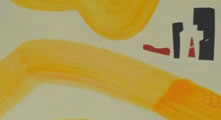
He is consistent with the idea of "do" painting furthermore he has always proceeded through cycles of aesthetic projects in which the artwork is the golden figure of the world through which achieves the epiphany of the image.
Quoting the roman art critic Professor Lorenzo Canova:
"Getting to the heart of the idea through a long process of sublimation and purification of the image, to reach the hot core of representation through a manual, intellectual and spiritual route at the same time. These are the assumptions that have always inspired and characterized the Mafonso's long journey of research from the series "In the manner of the others"(1972) up to "Dimore" of the recent years which despite its modernity is the result of a severe classical and Renaissance view of the artwork, a concept based on the irreplaceable basis of design that becomes a way to give a tangible form at the first idea that arises in the mind of the artist as a kind of divine spark. It is no coincidence that Mafonso preserves an ancient neo-Platonic heritage in his conception of art that is constantly inspired by that superior spark to try to keep alive the utopia of making sense of the world through the creative process of his work.
Mafonso starts from a texture of signs that intersects each other as a mythological forge in a network from which originates a light and incumbent mail, the thin warp and the structure of plots that make the absolute system of a mechanism complex time and flawless at the same time.
This system of drawing is what gives rise to all the Mafonso's works and represents the conceptual and stylistic basis of his work in its many forms, from painting to sculpture to installations.
dirartecontemporanea | 2.0 gallery
www.dirartecontemporanea.eu
Angelo Marino
Via Enrico Caruso, 9
81100 - Caserta - Italy
+39 3334461479
dirarted20@gmail.com
web designer Mirko Valentino

© dirartecontemporanea 2.0 edizioni
April 2014